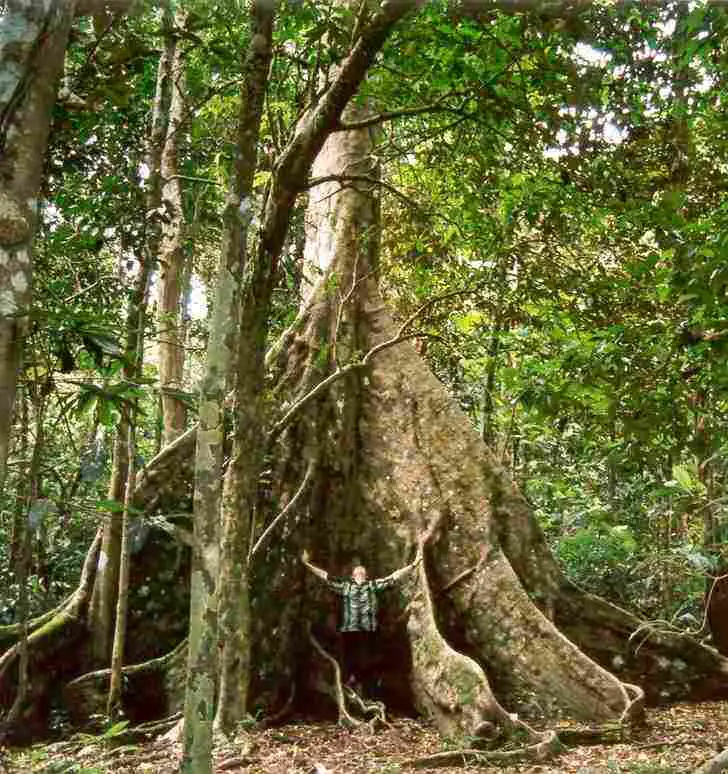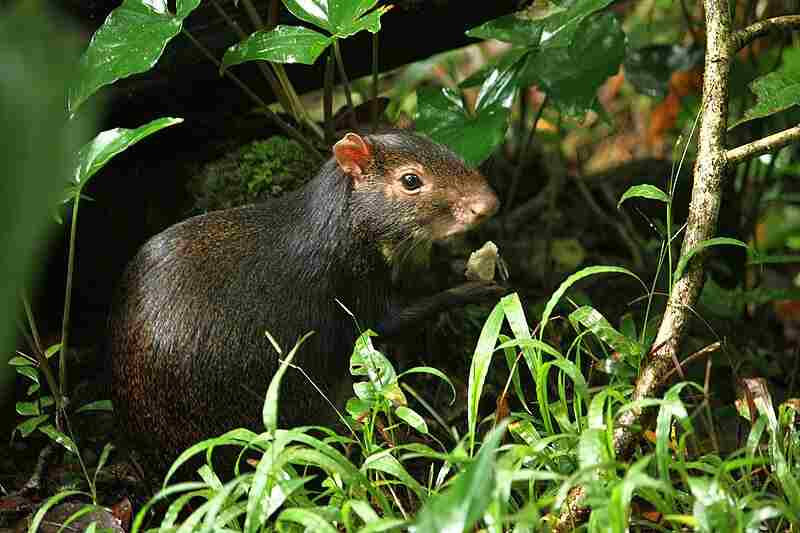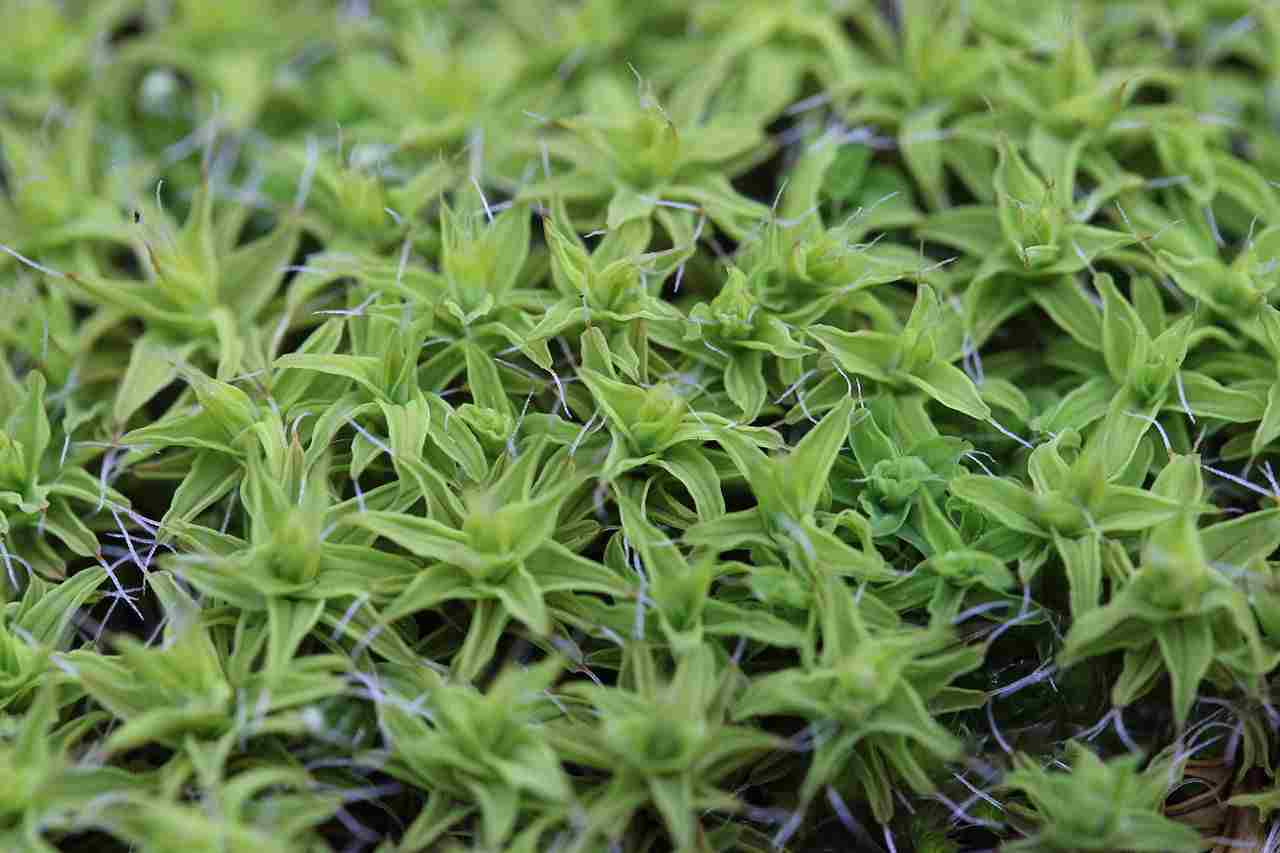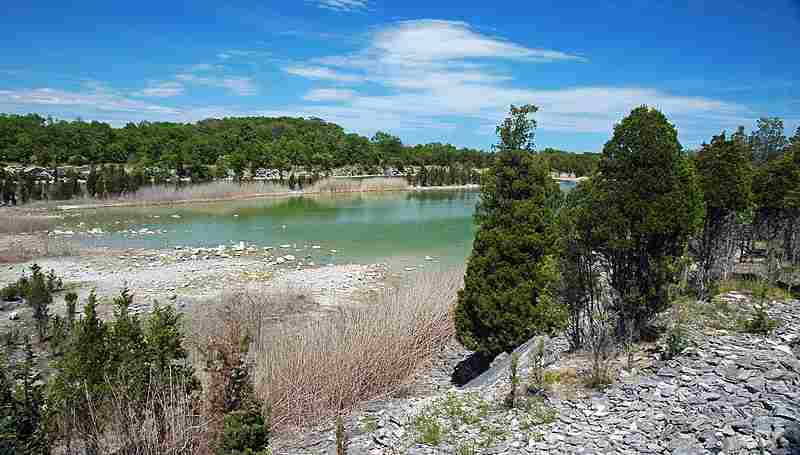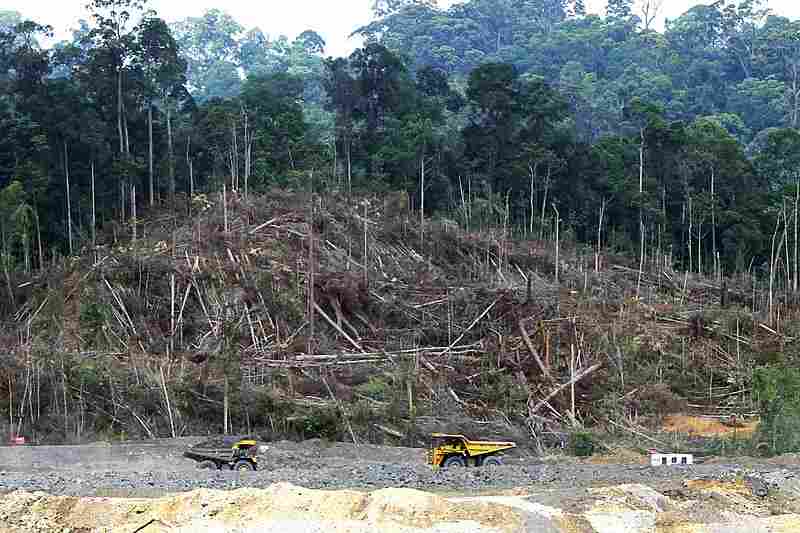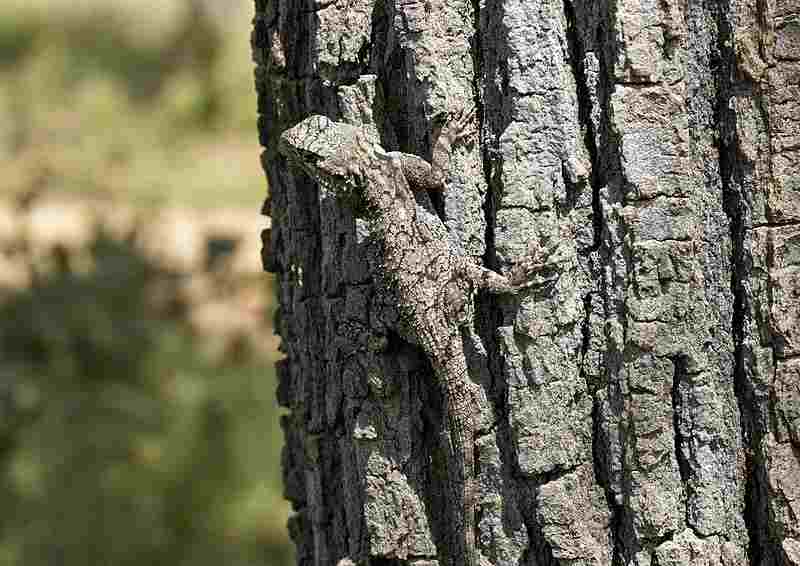13 Unique Characteristics, Plants and Trees in the Tropical Rainforest
Unique characteristics of the tropical rainforest are; high precipitation rate, warm temperature, relatively stable climate, lack of seasonality, nutrient-poor soil, high biodiversity, and dense vegetation. Plants and trees in the tropical rainforest include; rubber tree, palm, tropical pitcher plant, Kapok tree, moss, and orchid.
This article discusses the unique characteristics of the tropical rainforest ecosystem, as follows;
-Unique Characteristics of the Tropical Rainforest Ecosystem
1). High Precipitation Rate
Tropical rainforests are known for their exceptionally high rates of precipitation rates, which makes them one of the wettest and most densely vegetated biomes on Earth. This section discusses some of the key details regarding this characteristic.
Details of the High Precipitation of Rainforests
High precipitation in the tropical rainforest ecosystem, can be discussed in terms of factors like annual precipitation rate, absence of dry seasons, convective rainfall patterns, intertropical convergence zone (ITCZ), diversity, and hydrological cycling. These details are outlined as follows;
Tropical rainforests typically receive annual precipitation that ranges from 80 inches (200 centimeters) to over 400 inches (1,000 centimeters). Some of these, such as the Amazon Rainforest located in South America, receive as much as 100 to 400 inches of rainfall in a year. This consistent and copious rainfall is a defining feature of these ecosystems.
Unlike some other climatic zones, tropical rainforests do not have a distinct dry season. They receive significant levels of rainfall throughout the year, with only minor variations in precipitation rates. This constant moisture establishes a stable and humid environment which supports the immense biodiversity of these ecosystems.
High precipitation in tropical rainforests is mainly the result of convectional rainfall. As solar radiation heats the moist air near the equator, it is forced to rise, cool, and condense, to form clouds that eventually lead to heavy rainfall. This process occurs daily, and contributes to the consistent and abundant rainfall.
The position of the Intertropical Convergence Zone, which is a belt of low pressure occurring close to the equator, is an important factor with respect to the high precipitation of tropical rainforests. The ITCZ shifts seasonally, and brings rain to different parts of the rainforest, thereby contributing to the overall wet tropical climate.
While the overall characteristic of high precipitation is consistent across tropical rainforests, minor variations in the timing and intensity of rainfall exist among different types of rainforests. For example, some regions may experience short periods of very heavy rainfall, while others have more evenly distributed rainfall rates throughout the year.
The high precipitation also provides stable abiotic conditions in tropical rainforests, with a continuous supply of water. This consistent moisture supports a diverse group of plants and animals.
Constant tropical rainfall is crucial to the global hydrological cycle. It helps to regulate temperature, humidity, as well as weather patterns in the surrounding regions, affecting weather and climate worldwide.
While the high precipitation sustains life in rainforests, it is also linked to some challenges. Excessive rainfall can lead to soil-nutrient leaching, which is why many rainforest plants have evolved mechanisms to efficiently absorb and conserve nutrients. Also, the heavy rainfall can cause periodic flooding and soil erosion in some areas.
2). Warm Temperatures
Warm temperatures are a defining attribute of tropical rainforests and contribute significantly to the climate and species richness of these ecosystems. Some of the key details regarding this characteristic are discussed in the following subsection;
Details of the Warm Temperature Conditions of Tropical Rainforests
Warm temperatures in tropical rainforests can be discussed within various contexts which include; equatorial climate, average temperatures (daytime, nighttime), lack of seasonal variation, solar intensity, influence of ocean currents, environmental stability, photosynthesis, biodiversity, and associated challenges. Below is an outline with more detail;
Tropical rainforests are generally positioned near the equator, where they experience a consistent equatorial climate throughout the year. This leads to warm temperatures that persist, with only negligible fluctuations.
The average temperatures in tropical rainforests typically lie between 77°F (25°C) and 86°F (30°C). Daytime temperatures can rise above this range, to above 90°F (32°C). Nighttime temperatures also remain relatively warm, with rare notable declines.
Unlike regions with distinct seasons, tropical rainforests lack significant variation in seasonal temperature. There is no traditional winter or summer, and temperatures are relatively constant year-round.
Also, the proximity of tropical rainforests to the equator implies they receive a continuous and intense supply of solar energy. This solar intensity contributes to the warm temperatures by heating atmospheric gases, which, in turn, warm the land and water.
In some ecoregions, warm ocean currents can also contribute to the temperature of tropical rainforests. These currents transfer heat energy from the equator to the rainforest zones, and maintain the warm climate.
Warm temperatures establish a stable environment, which is important for ensuring the sustainability of tropical rainforest diversity. Species which have adapted to these conditions thrive in this warmth, allowing for the coexistence of numerous rainforest plants and animals.
Year-round photosynthesis and plant growth are supported by tropical warmth. This condition facilitates the evergreen nature of rainforests, where vegetation remains green and active throughout the year.
As implied earlier, the warm and stable environment is one of the factors responsible for the high biodiversity in tropical rainforests, as it provides a favorable climate for a broad variety of plant and animal species to coexist.
Lastly, although the warmth is generally favorable for biodiversity, it may also be challenging in some cases. Many species have evolved adaptations to cope with the constant warmth, such as specialized cooling mechanisms and overall heat tolerance.
3). Relatively Stable Climate
The tropical rainforest biome has a relatively stable climate, which is characterized by consistent environmental conditions throughout the year. This stability is a major feature of tropical ecosystems and contributes to supporting their immense biodiversity. Here we discuss the details regarding relatively stable climate in tropical rainforests.
Details of Climatic Stability in Tropical Rainforests
Climatic stability in tropical rainforests can be discussed within various contexts, which include; lack of seasonality, constant solar insolation, uniform day length, steady temperature ranges, high humidity, regularity of precipitation, no extreme weather events, and biotic implications.
Arguably one of the most defining characteristics of tropical rainforests is the absence of distinct seasons. Unlike temperate forests, where there are noticeable changes between summer and winter periods, tropical rainforests experience minimal seasonal variation in both temperature and day length.
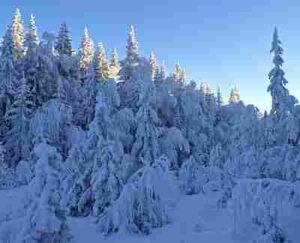
Tropical rainforests are located near the equator, and as a result, they receive nearly constant and intense solar insolation throughout the year. This consistent sunlight provides a stable energy resource for photosynthesis and plant growth, and promotes the evergreen nature of rainforests.
In areas close to the equator, day length remains relatively consistent year-round, with approximately 12 hours of daylight and 12 hours of darkness on each day. This uniformity if day length is conducive to plant and animal adaptations that do not depend on seasonal cues for activities like breeding or migration.
The humidity (and temperature) in tropical rainforests are consistently high, with relative humidity often exceeding 80%. This constant moisture in the air also fosters a stable and humid terrain that supports dense vegetation and abundant wildlife.
Tropical rainforests receive regular and abundant rainfall throughout the year, owing to the absence of a distinct dry season. The constant precipitation contributes to stable water availability for organisms.
Also, tropical rainforests are typically not prone to extreme weather events such as tornadoes, hurricanes, or prolonged droughts. While some regions may be subjected to occasional heavy rainfall, these events are not seasonally defined and neither disrupt the overall stability of the climate.
The relatively stable climate of tropical rainforests provides a reliable and predictable environment for a broad range of flora and fauna species. This predictability allows for the evolution of resilient adaptations and intricate ecological relationships.
Lastly, the lack of seasonal variation in temperature and day length enables plants to grow continuously, resulting in the evergreen nature of tropical rainforests. This constant growth in turn provides a continuous food source for herbivores and supports the rainforest food chain.
4). Absence of Seasonality
Discussions so far already show that tropical rainforest biome is characterized by the absence of seasonality, which distinguishes it from many other ecosystems. Below are the concise details regarding this characteristic.
Details of Non-Seasonality in Tropical Rainforests
Absence of seasonal climatic variations in tropical rainforests can be discussed in terms of the absence of distinguishable atmospheric temporal trends, stability of solar insolation, consistency of daytime duration, temperature conditions, regularity of precipitation, and environment predictability.
Tropical rainforests are characterized by a climate that remains relatively constant throughout the year. They lack distinct seasons, such as winter, spring, summer, or autumn, and do not experience significant temperature or day-length variations.
These regions generally occur near the equator, which results in consistent and intense solar insolation year-round. The uniform supply of sunlight contributes to continuous plant photosynthesis and an evergreen nature.
Close to the equator, day length remains nearly uniform and constant, with approximately 12 hours of daylight and 12 hours of darkness daily. This uniform day length supports organic adaptations that do not depend on seasonal cues.
As discussed earlier, tropical rainforests maintain warm temperatures with minimal temperature fluctuations. Average temperatures range from 77°F (25°C) to about 86°F (30°C), which ensures a constant and warm climate.
These regions receive frequent and abundant rainfall year-round. There is also no distinct dry season, which implies that water supply is generally consistent for plants and wildlife.
Lastly, the absence of seasonality fosters a stable and predictable environment for the diverse species that can be found in tropical rainforests. This stability allows for the evolution of different adaptations as well as ecological relationships.
5). Nutrient-Poor Soil
Nutrient-poor soil is another distinctive characteristic of tropical rainforests, and has important implications for the ecology of the biome as a whole. Below is an outline of the concise details regarding this characteristic.
Overview of Nutrient Deficiency in Tropical Rainforest Soils
The nutrient deficiency of tropical rainforest soils can be discussed in various contexts, such as; occurrence of essential nutrients, nutrient recycling processes, shallow topsoil conditions, root competition, biodiversity adaptations, complex food webs, and conservation of resources.
Tropical rainforest soils have low concentrations of essential nutrients like nitrogen, phosphorus, and potassium, which implies that they are relatively infertile.
In spite of the poor nutrient content, rainforests have evolved highly efficient mechanisms for mineral recycling. Organic matter undergoes rapid biodegradation and releases nutrients that are absorbed by plants, thereby minimizing nutrient losses.
In several rainforests, the topsoil layer with nutrient-rich organic material/biomass is shallow, often reaching only a few centimeters deep. Below this layer, the soil may be leached of nutrients.
The limited nutrient availability in turn results in intense competition among plant roots for access to essential nutrients. Many plants have evolved specialized root systems to efficiently extract these nutrients from the soil.
The nutrient-poor soil has also driven the evolution of diverse plant and animal species with highly specialized adaptations, such as mycorrhizal associations and diverse nutrient-conserving strategies.
Nutrient limitations influence the structure of the food web in tropical rainforests. Species have generally adapted to extract and recycle nutrients efficiently, which sustains the diverse trophic levels within the ecosystem.
To thrive in this environment, rainforest plants often invest resources in defense mechanisms, such as chemical compounds, for deterring herbivores and limiting nutrient loss.
6). High Biodiversity
High biodiversity is a hallmark characteristic of tropical rainforests, and contributes to their ecological significance. This section highlights some essential details regarding rainforest biodiversity.
Details of Biodiversity in Tropical Rainforests
Biodiversity in the tropical rainforest can be discussed from perspectives like species richness, ecological complexity, endemic species, niche specialization, coexistence strategies; habitat heterogeneity, continuous plant growth, and tropic interactions.
Tropical rainforests host an unparalleled diversity of floral and faunal species. They are often described as "the world's biotic treasure troves" or similar names, due to the sheer number of species that are present.
The richness of species also extends to various trophic levels, resulting in dense, intricate food webs and multidimensional relationships.
Several species found in rainforests are unique and endemic, which means that they are found nowhere else in the world. These regions are hotspots for organisms with restricted ranges.
The competitive biotic environment of the rainforest has led to niche specialization, with many species evolving distinctive adaptations for survival.
The dense nature of rainforest communities forces species to develop strategies for coexistence, often through partitioning of resources or activity periods.
Rainforests consist of various microhabitats, which include the forest floor, understory, and overhead canopy, each of which supports different species that are adapted to their specific niches.
The absence of seasonality supports year-round photosynthesis, biomass production and plant development, providing a constant food source for herbivores.
Mutualistic relationships, which may occur in forms such as pollination and seed dispersal, are very common in rainforests, and foster biodiversity.
7). Dense Vegetation
Dense vegetation is another prominent characteristic of tropical rainforests, and can be observed in their lush and evergreen appearance. Below are the concise details regarding this attribute.
Aspects of Vegetative Density in Tropical Rainforests
Density of tropical rainforest vegetation can be discussed in terms of the thickness of the forest canopy, attributes of understory vegetation, presence of epiphytes, solar obstruction at ground level, and biodiversity/biotic implications.
Tropical rainforests feature a dense and multi-layered canopy which is formed by the interlocking branches and leaves of numerous trees. This canopy can extend to over 100 feet (30 meters) above the forest floor.
Below the canopy is an understory comprising of smaller trees, shrubs, and plants thrives. This multi-layered structure establishes a continuous and complex network of vegetation.
Epiphytic plants, such as orchids, ferns, and bromeliads, grow on tree barks, while climbing vines wind their way around tree branches and trunks, further contributing to the density of vegetation.
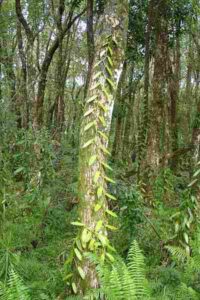
The dense canopy of rainforests limits the amount of sunlight that is able to reach the forest floor, and results in low light conditions. As a result of this obstructive effect, specialized plants have adapted to thrive in the shaded understory zone.
Dense vegetation provides numerous microhabitats, which contribute to the high biodiversity that is found in tropical rainforests. These habitats are home to an exceptional variety of plant and animal organisms.
The evergreen nature of tropical rainforests implies that plants are productive year-round, with to continuous and vigorous growth.
Lastly, abundance of tropical rainforest plant species supports a range of herbivores, pollinators, and seed dispersers, resulting in dynamic ecological relationships within the dense vegetation.
-Plants and Trees in the Tropical Rainforest
Plants and trees in the tropical rainforest include vascular and non vascular autotrophs like; rubber tree, palm, cobra lily, kapok tree, moss, and orchid.
1). Rubber Tree
The rubber tree, scientifically known as Hevea brasiliensis, is a prominent plant species that is found in the tropical rainforests of South America and Southeast Asia. Some of the key characteristics of the rubber tree are discussed below.
Characteristics of Rubber Trees
Characteristics of rubber trees in tropical rainforests include; latex production, tall and straight trunks, evergreen leaves, inflorescence, fruit production, humidity tolerance, and economic relevance.
One of the most notable characteristics of the rubber tree is its latex production capability. Latex is a milky white substance which is found in the tree's bark, and it is also the source of natural rubber. Rubber tappers harvest this latex by making shallow cuts in the tree's bark, which allow the substance to flow into collection containers.
Rubber trees are tall, possessing straight and slender trunks that can reach heights of up to 100 feet (30 meters). They also have a relatively uniform appearance, with a smooth grayish or greenish bark.
The rubber tree is characterized by evergreen, glossy, and elliptical leaves. These leaves are typically leathery and dark green in nature, which provides a lush appearance throughout the year.
Rubber tree flowers are small, fragrant and inconspicuous. They are arranged in panicles or clusters, and the tree also produces both male and female flowers.
The rubber tree's fruit is a woody capsule that contains three seeds. These seeds are surrounded by a papery covering. When the fruit capsules mature and split open, the enclosed seeds are released.
Rubber trees are well-adapted to the high rainfall and humidity of tropical rainforests. They thrive in these conditions and can grow at rapid rates.
Also, the rubber tree is of significant economic importance as a primary source of natural rubber, which is itself a valuable commodity used in various industries, including tire manufacturing, footwear, and industrial products.
Rubber trees are often cultivated in large plantations for commercial rubber production. They require well-drained soil, regular rainfall, as well as warm temperatures to flourish.
As earlier stated, rubber tapping is the process of harvesting latex from the rubber tree. It involves making a series of diagonal cuts in the tree bark, which allow latex to drip into containers. This process can be repeated at intervals of a few days.
In agroforesty sustainable rubber cultivation practices aim to balance latex production with forest resource conservation. Efforts are made to ensure that rubber plantations do not contribute to deforestation or other harmful environmental impacts.
2). Palm
Palm trees are a diverse and abundant group of plants which are found in tropical rainforests. They exhibit various characteristics that contribute to their ecological value. The following subsection discusses the key features of palm trees in the rainforest.
Characteristics of Palm Trees in Tropical Rainforests
Characteristics of palm trees include; tropical distribution, genealogical diversity, morphological variability, compound leaves, fruit production, low light tolerance,
Palm trees are predominantly found in tropical regions, which include rainforests. They are often associated with lowland areas but can also occur in montane rainforest ecosystems.
The family Arecaceae, which encompasses palm trees, is one of the most diverse plant families in the world, comprising thousands of species. Various palm species inhabit different niches within the rainforest.
Many palm trees have tall, slender trunks that can grow to great heights. These trunks are often smooth and lack branches, which enables them to efficiently capture sunlight in the dense rainforest canopy.
Palm leaves are typically compound, and consist of leaflets attached to a central stalk. These leaves are adapted to efficiently shed rainwater and resist intense winds.
Palms also produce fruit that is a critical food source for several rainforest animals. Some palm species possess large, fleshy fruits that are important for frugivorous animals, and contribute to seed dispersal.
Some palm species have adapted to the low light-intensity conditions of the rainforest understory by developing shorter and broader leaves to capture available sunlight.
Palm trees also provide habitat, food, and nesting sites for a broad range of rainforest creatures, which include birds, arthropods, and mammals. Certain species, such as the coconut palm, have cultural and economic importance for local human communities.
Some palm species are agriculturally cultivated for their oil, such as palm oil, which is widely used in the food and cosmetic industries. However, palm oil plantations can have environmental and social repercussions when not sustainably managed.
Certain palm species serve as hosts for climbing lianas, and enhance the overall vertical structure and diversity of the rainforest.
Lastly, palm trees are instrumental in nutrient cycling, and their leaves, when they fall to the forest floor, contribute to the recycling of organic matter and the enrichment of tropical soils.
3). Tropical Pitcher Plant
Tropical pitcher plants, belonging to the Nepenthaceae family, exhibit distinct features in the rainforest. Some of them are discussed below;
Characteristics of Tropical Pitcher Plants in the Rainforest
The characteristics of tropical pitcher plant in the rainforest include; carnivorous behavior, pitcher-shaped leaves, striking coloration, specialized trapping mechanism, adaptation to nutrient-poor soils; biodiversity support, and genealogical variety.
Pitcher plants are carnivorous, obtaining nutrients by attracting, trapping, and digesting insects and other small organisms in their modified leaves.
Their leaves are evolved into pitcher-shaped structures with a lid that serves as a canopy and a slippery, waxy interior which lures and traps prey.
Pitcher plants often possess colorful and striking pitchers, that range from green and red to yellow and purple, and make them visually appealing to potential prey.
Insects are enticed by nectar, fall into the pitcher, and become unable to escape due to the smooth, slippery surfaces. Digestive enzymes occurring within the pitcher break down these prey into nutrients.
Pitcher plants often grow in nutrient-poor soils, which makes their carnivorous habits essential in order to obtain necessary nutrients.
They also create a unique microhabitat for invertebrates and microorganisms that inhabit the pitchers. These inhabitants can in turn contribute to the breakdown of prey and recycling of nutrients.
There is a broad diversity of pitcher plant species, each possessing unique adaptations and characteristics, depending on their specific habitat and prey.
Some pitcher plant species are at risk of habitat loss due to deforestation and overharvesting, making their conservation important.
4). Kapok Tree
The Kapok tree, scientifically referred to as Ceiba pentandra, is a large and iconic plant species that is commonly found in tropical rainforests. The subsection below discusses some of the key characteristics of the Kapok tree.
Characteristics of the Kapok Tree
Core attributes of the Kapok tree are its imposing stature, broad trunk, thorny bark, deciduous nature, unique fruits, wildlife habitat, and cultural significance.
The Kapok tree is one of the largest trees found in tropical rainforests, known for its towering height that can reach up to 200 feet (61 meters). It often emerges above the entire rainforest canopy, and dominates the skyline.
Also, the tree has a massive and buttressed trunk, which provides stability in the occasionally swampy or flood-prone rainforest soils. The buttresses often create distinctive habitats for various organisms.
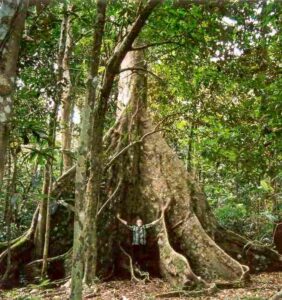
The Kapok tree's bark is covered in sharp, large, thorns that help to deter herbivores from damaging the tree. The thorns protect against browsing animals, and allow the tree to grow undisturbed.
Kapok tree is deciduous, and sheds its leaves during the dry season (which is not very distinct in tropical rainforests). This leaf loss helps the tree conserve water during periods of drought, contributing to its adaptation to seasonal rainfall patterns.
The Kapok tree produces large, brown, and woody fruits filled with cotton-like fibers. These fibers are themselves surrounded by seeds and serve as a buoyant dispersal mechanism, which helps seeds spread when the fruits open and are carried by the wind.
The tree provides essential habitat and resources for a variety of rainforest species. Its massive trunk often has hollow cavities that are used by birds, bats, and other animals for nesting and shelter.
The Kapok tree is culturally significant for many indigenous communities in the Amazon rainforest. It is often considered a sacred or symbolic tree, having multiple cultural rituals and beliefs associated with it.
Kapok trees are also known for storing significant amounts of carbon in their massive trunks, which means they contribute to carbon sequestration and the regulation of the global carbon cycle.
Indigenous people have historically utilized Kapok tree fibers for making clothing, pillows, and mattresses owing to their buoyancy and insulating properties.
Lastly, Kapok trees, being dominant canopy species, are critical contributors to the biodiversity and ecological functioning of tropical rainforests. Their conservation is therefore important for the well-being of the entire ecosystem.
5). Moss
Mosses are a diverse group of simple plants that can be found in various ecosystems, including tropical rainforests. Their presence illustrates the ability of rainforests to support both vascular and non vascular plants effectively. Although not as conspicuous as larger rainforest plants, mosses have important functions in these ecosystems. Below are some key characteristics of mosses in the tropical rainforest.
Characteristics of Mosses in the Tropical Rainforest
Key characteristics of mosses in the tropical rainforest are; small/simple structure; non vascular composition, possession of rhizoids, simple leaves, spore reproduction, drought tolerance, multiple ecosystem functions, habitat formation, symbiotic behavior, and ecologic sensitivity.
Generally, mosses are small, non-vascular plants that typically form low-lying, dense carpets or cushions on different kinds of substrates, including soil, rocks, and tree trunks. They rarely grow more than a few centimeters in height.
Also, mosses lack vascular tissues like xylem and phloem, which can be found in higher plants. Instead, they absorb water and nutrients directly through their leaves, by depending on capillary action and diffusion.
Mosses anchor themselves to their substrate using hair-like structures referred to as rhizoids. Rhizoids also help to absorb water and minerals.
Mosses possess simple leaves and lack true roots, stems, and complex structures. Their leaves are usually one cell layer thick and are utilized for photosynthesis and water absorption.
Spores are the primary reproductive tools for mosses, which have a life cycle that alternates between a haploid (gametophyte) and a diploid (sporophyte) generation. They produce sporangia on stalks, that release spores for dispersal.
In general, mosses are adapted to the high humidity of rainforests but can also effectively tolerate periodic drying out. They can quickly rehydrate and become metabolically active when water becomes available.
Mosses serve diverse ecological roles in the rainforest. They help to retain moisture in the soil, preventing erosion and providing microhabitats for other forest organisms.
A microenvironment is created by mosses, that supports a diverse array of microorganisms, such as bacteria, fungi, and several invertebrates.
Some moss species form mutualistic relationships with nitrogen-fixing cyanobacteria or mycorrhizal fungi, which help to enhance nutrient availability in the leached rainforest soils.
Often, mosses help improve air quality by trapping dust particles and absorbing pollutants through their surfaces.
As stated earlier, mosses play host to various invertebrates and microorganisms, serving as a food source and vegetative habitat for many rainforest creatures.
The presence and health of specific moss species can be exploited as indicators of environmental conditions, which may be defined by air quality and moisture levels in the rainforest.
6). Orchid
Orchids can be described as a diverse and highly specialized group of flowering plants that are found in tropical rainforests and various other ecosystems around the world. In rainforests, they exhibit several distinctive characteristics; some of which are discussed below;
Characteristics of Orchids in the Tropical Rainforest
Some key attributes of orchids in the tropical rainforest are; epiphytic growth, aerial roots, diversified morphology, bilateral symmetry, highly specialized pollination, symbiotic behavior, longevity, and habitat variability.
Many rainforest orchid species are epiphytic, which means that they grow on the parts and surfaces of other plants, such as tree branches and bark. This adaptation enables them to access filtered sunlight as well as moisture in the rainforest canopy.
Orchids also possess specialized roots, known as aerial or air roots, that help them to absorb moisture and nutrients directly from the air. These roots also help anchor the orchid to its host plant.
A wide range of morphological diversity is typically displayed by orchids. Their flowers come in various shapes, sizes, as well as colors, and often feature intricate patterns and distinctive adaptations for pollination.
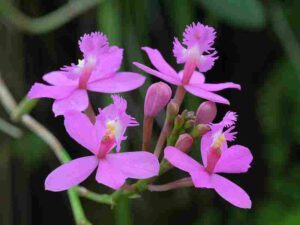
Orchid flowers generally exhibit bilateral symmetry, which implies that they can be divided into two equal halves. This symmetry is often associated with specific pollinators, such as insects or birds, and ensures effective pollination.
Like several other rainforest plants, orchids often form mutualistic relationships with mycorrhizal fungi in their roots. These fungi aid in nutrient uptake, especially in nutrient-deficient rainforest soils.
Several orchid species have developed specialized relationships with particular pollinators, such as specific bee species or moths. These relationships often involve intricate mechanisms for transfer of pollen and cross-pollination.
Orchids can have exceptionally long lifespans, with some individual plants living for decades or even centuries. They continue to produce flowers each year.
While epiphytic orchids are common, there are also some terrestrial orchids that grow in rainforest understories or directly on forest floors. Some orchid species are lithophytic, and grow on rocks.
Orchids are often prized for their beauty and uniqueness, which leads to overcollection in some regions. As a result, many orchid species are now at risk of both local and global extinction, making their conservation an important concern.
Orchids provide vegetative habitat as well as nectar for a range of pollinators, thereby contributing to the overall biodiversity of rainforests. They are also instrumental in nutrient cycling through their mycorrhizal relationships.
Lastly, orchids have cultural and economic importance in many regions, where they are utilized in traditional medicine, perfume-making, and horticulture.
Conclusion
Unique characteristics of the tropical rainforest are;
1. High Precipitation Rate
2. Warm Temperatures
3. Relatively Stable Climate
4. Absence of Seasonality
5. Nutrient-Poor Soil
6. High Biodiversity
7. Dense Vegetation
Plants and trees in the tropical Rainforest Ecosystem include;
1. Rubber Tree
2. Palm
3. Tropical Pitcher Plant
4. Kapok Tree
5. Moss
6. Orchid
